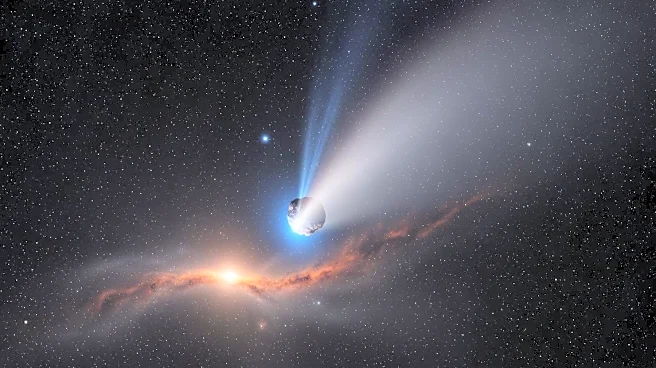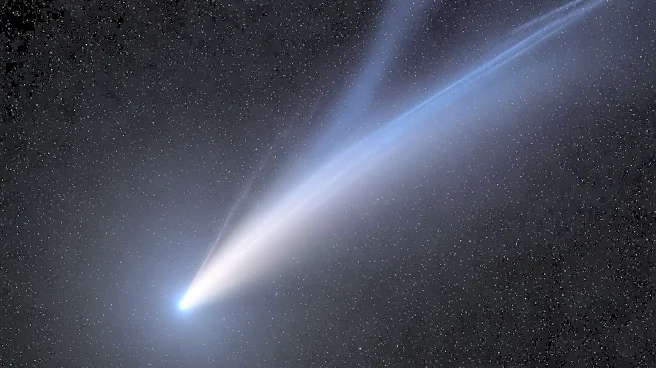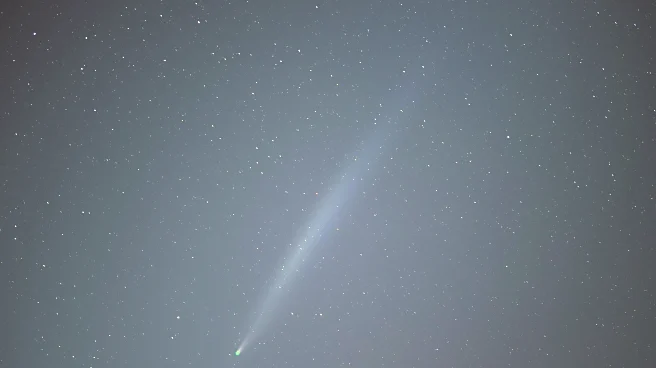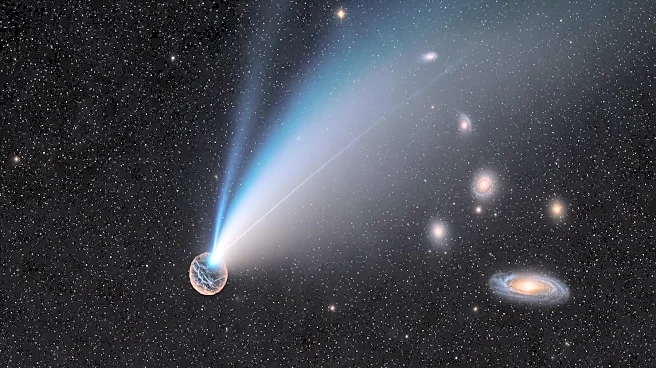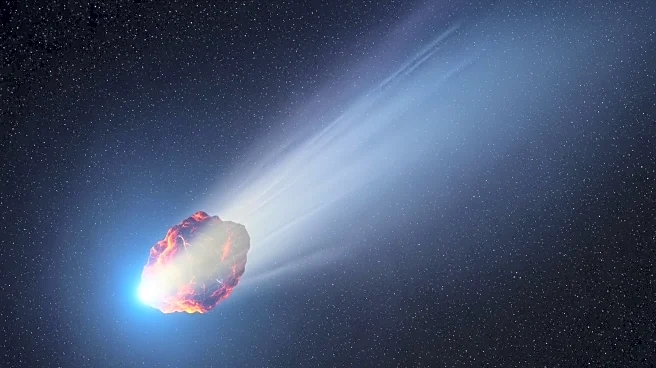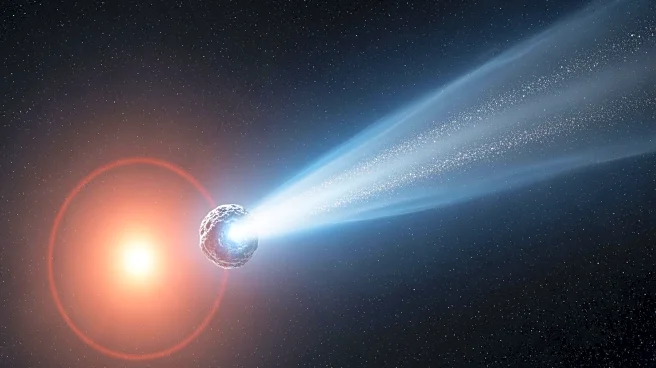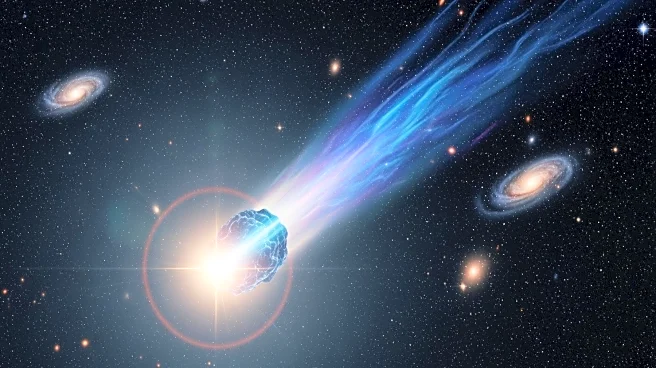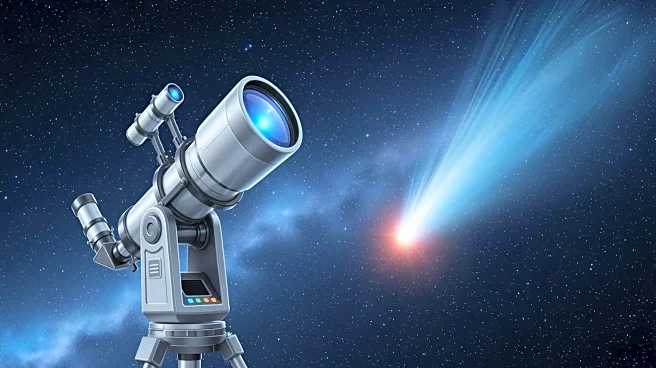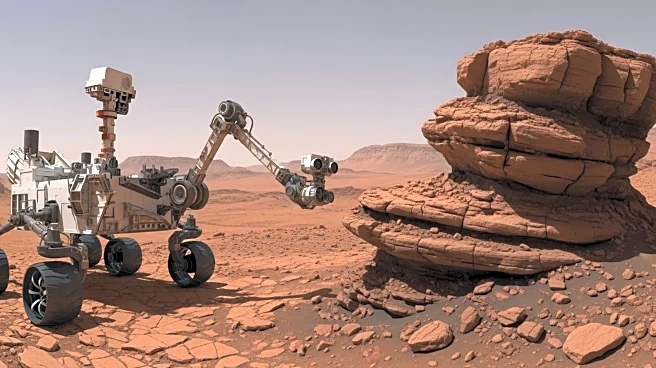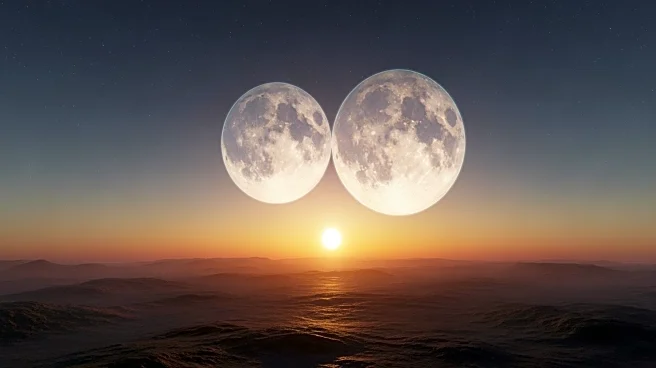What's Happening?
Comet 3I/ATLAS has reached its closest point to the sun, known as perihelion, on October 30, 2025. At this stage, the comet is hidden behind the sun and is visible only to space probes scattered throughout
the solar system. The comet is passing 1.35 astronomical units from the sun, approximately 202 million kilometers away. This proximity causes the sun's heat to vaporize frozen gases on the comet's surface, creating a bright halo and two tails composed of dust and charged particles. Scientists are preparing for peak activity, although it will not be visible from Earth. Observations are being conducted by probes orbiting Mars and other spacecraft, including NASA's Psyche and Lucy missions, as well as the European Space Agency's JUICE mission.
Why It's Important?
The study of comet 3I/ATLAS provides valuable insights into the chemical composition and origins of interstellar comets. Researchers aim to analyze the gases and dust released during perihelion to understand the comet's makeup, which includes unusually high levels of carbon dioxide and nickel. These findings could offer clues about the comet's birthplace, a molecular cloud over seven billion years old, and the star system from which it originated. The data collected by space probes will contribute to our understanding of cometary behavior and the conditions of the early solar system.
What's Next?
Astronomers expect comet 3I/ATLAS to reappear toward the end of November or early December, although it will likely be faint. Observatories such as Hubble and the James Webb Space Telescope hope to continue studying the comet if it remains active. The European Space Agency's JUICE mission will store data until it can transmit again in February, providing further opportunities for analysis. Continued observation will help scientists learn more about the comet's characteristics and its journey through the solar system.
